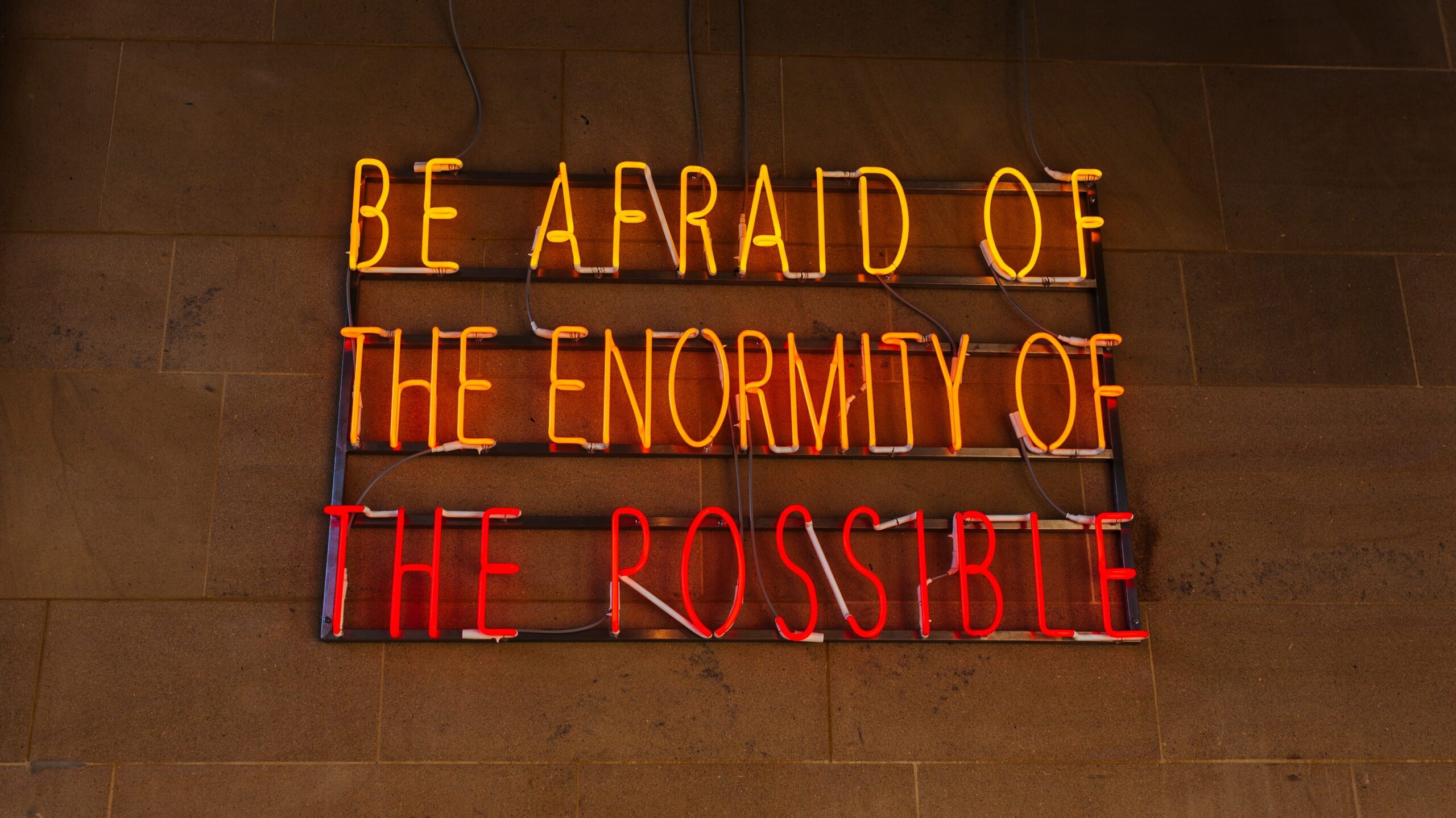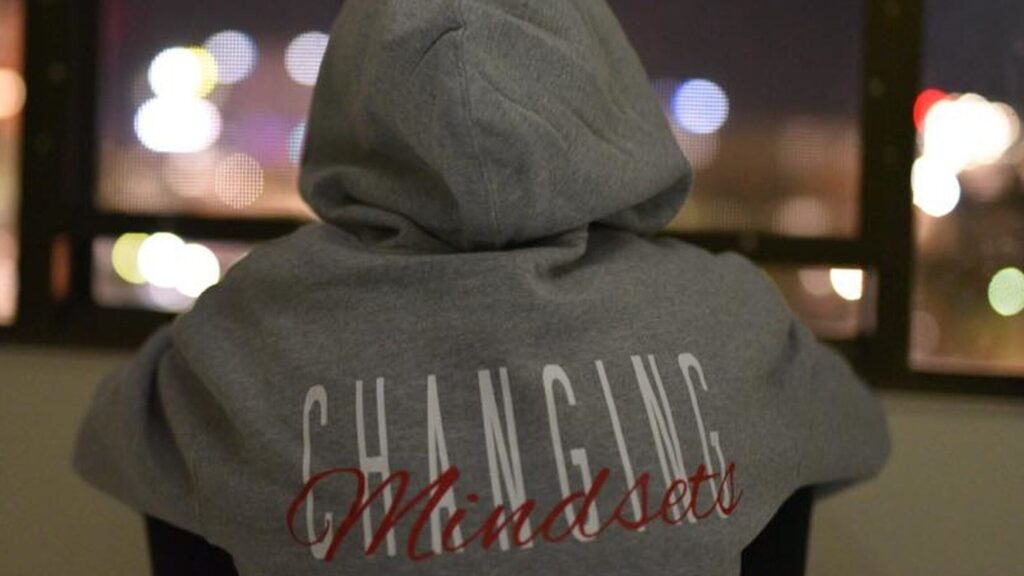Listen To This Article On The Tiny Leaps, Big Changes Podcast
You are in total control of how you perceive reality. The way that you think about life and the world around you has a huge impact on how happy or unhappy you are, your relationships, and your success in general.
So why does it seem so dang difficult to control this part of your life then? And, when you realize that you want to, why is it so hard to change your mindset? Well improvement, of any kind, is difficult for most people because they have been conditioned to believe that the process of improvement is bad. This leads to a lack of motivation, lack of perspective, and ultimately a lack of trying. But it’s not hard, or at least it doesn’t have to be. It’s just different. And different can be good.
In this article we’re going to explore how to change your mindset for the purpose of improving your life.
This is a critically important part of self development because your thoughts and beliefs about the world, and your place in it, can have a major effect on how happy or unhappy you are overall.
But don’t worry because you can overcome a negative mindset and start working towards more happiness through a very simple process, one that I’ve discussed many times before on the podcast.
But before we get into the rest of the process, we first need to understand where those thoughts come from, reflect on what they’ve meant in your life, and then you start reprogramming them for a more positive overall effect.
But first up, let’s start with establishing the basics, just so we are all on the same page.

What is a mindset exactly?
A mindset is a set of beliefs or attitudes that an individual uses to interpret the world. It’s not just what you think but how you think and why, so it’s important to understand how these things influence your feelings and behavior in order to improve them for the better.
Our mindset is responsible for things like how we deal with stress, how much effort we put into life, how much motivation we have for the goals we have, and what those goals even are.
Your mindset affects the way you see yourself and the world around you as well as your relationships with people in your life including family members, friends or even colleagues.
So it’s important to be aware of how our mindsets affect the way we live and how to improve them.
Mindsets can be changed through small changes in perspective, which is what this blog post will teach you about.
And the best part is that no matter who you are or where you come from your mindset has room for improvement as long as you’re willing to take action!
Maintaining a favorable outlook on life takes effort, and the best way to do that is through a very long process of reflection and rewiring our brain.
This won’t happen overnight, so be patient with yourself and know that this process takes time.

What are some common negative mindsets?
Many people struggle with things like depression, self-doubt, anxiety and more on a daily basis because they have negative mindsets that tell them they are not good enough.
Now to be clear, I’m not talking about medically diagnosed depression or anxiety here. In fact, throughout this entire article you should assume that I’m specifically speaking towards the run-of-the-mill variety of any issues discussed.
Negative mindsets are incredibly damaging to us and our motivation, but they are way more common than you might realize.
Some examples of a negative mindset might include thinking:
- I’m not good enough
- The world isn’t safe for me or my loved ones (even though the world is actually pretty safe)
- I don’t know how to do this, so it’s best if I just give up and not try at all.
These are some of the most common mindsets that people have. Notice I said “mindsets” there and not “negative mindsets”. These are legitimately some of the most common views people have good or bad in relationship to their daily lives and their happiness. And they’re really harmful because what these negative thoughts lead us to believe is typically untrue or inaccurate about ourselves or about the people and world around us.
Typically, if we took a moment to reflect on these thoughts, we would realize that there is no truth to them. But when you’re in the moment and making difficult decisions it can be hard to do that. In those moments, these negative mindsets will go unchecked.

Is it possible to change your mindset?
The good news is that it is possible to make progress with your mindset, no matter how pervasive and difficult it may feel.
When we’re young, our mindsets are shaped by our environment or the people who care for us the most: parents, teachers, friends etc. These mindsets that we develop then show up later in life when it’s time to make decisions that’ll affect us, both in major and minor ways.
Things like deciding whether or not to have kids, trying to buy a home, whether or not you deserve to be in a loving relationship. It’s all affected by the mindset you hold because it’s all been framed by the experiences you’ve had up to this point.
For example, if you were raised with a negative mindset towards a particular area of life; like say your parents and teachers taught you that improving was too hard to be worth it, or that trying to be successful means hurting people around you; then when faced with your own decisions regarding these topics, you’ll default to those same mindsets.
But there are actually some pretty easy ways for your mindset to change, and it starts with what you pay attention to on a regular basis.
It could be how much time you spend reading uplifting stories over focusing on failures, or listening to uplifting podcasts instead of watching the nightly news, or taking more risks in different areas of your life.
It could even simply mean surrounding yourself with people who have a more positive mindset than you do.
Changing your mindset can actually be pretty straight forward but it’s not enough to just think about it, you’ve got to take action.

How changing your mindset can change your life
But just in case you aren’t quite convinced yet I want to paint a picture for you of how how exactly changing your mindset can change your life. I know it can be difficult to wrap your head around something so pretty nebulous and see how it may actually show up in your life.
The way you see yourself, and your position in the world around you, can change how others treat you. After all, if you consider yourself to be capable and intelligent, you tend to broadcast that confidence to the world around you.
With a negative mindset you may communicate the opposite which will severely limit the people willing and interested in approaching you. This can lead to less opportunities as well as cause a cycle that ultimately reduces your confidence even further.
Additionally, you might find yourself less stressed out by the things that used to frustrate you. Why? Well because you are seeing the world from a much more abundant viewpoint than you did before. When you can clearly see your place in the world around you it leads to small things not feeling as heavy as they once did.
Heck, you might even find it easier to lose weight or save money or find a partner or whatever your specific goals are. Just by changing the way you view life, the way you carry yourself in the world, and the way you react to the things around you, you also unlock massive potential for follow-through that you may not have had before. By feeling more confident you also act more confidently.

How to change your mindset for the better
The step-by-step process for changing your mindset is one of those things that will depend heavily on you as an individual. You need to factor in where your life currently is, what limitations you have, and what the extent of the change required truly is.
Change is a personal process
Change, of any kind, is inherently unique to the individual. For one thing, you need to ask yourself, and truly understand, what change you actually want.
Ask yourself, what is the desired outcome of changing my mindset? What are some limitations that might come up for me during this process?
What are the limitations I’m not considering? Things like having kids, a partner, a dog…these are all things that aren’t necessarily bad, but they do demand time and attention and thus are limitations.
Some other possible barriers to achieving your goal here may be time constraints, physical limitations, municipal limitations and any other factors.
Before you start trying to change your mindset you need to get clear on what your situation looks like so that you can create a plan for it.
Step one: Identify what area you want to focus on when improving your mindset
You might be asking, “What do I need to change?” That’s a great question that will help you identify the steps for changing your mindset.
The first step in changing your mindset is to identify what area you would like to focus on. It’s important to pick one single focus at a time versus trying to change too many things all at the same time. Especially when it comes to improving your mindset, things can feel incredibly hard to fully understand so spending time on one area at a time is really helpful.
For example, you might choose to focus on your views around your own ability at work, or the way you look at relationships. By choosing one thing in particular it will help you get a better understanding of what your process should look like. It will also help you find the space required to do the very real, and very difficult work of improving that area.
Step two: Find the smallest positive mindset shift that you could possibly make
While the ultimate goal may be to change our mindset around something that feels huge, you need to find a way of making change that feels manageable. That is, after all, the entire idea behind Tiny Leaps. Change, on it’s own, is incredibly scary and the idea of it can lead to overwhelm or stagnation. This is even more true when we start looking at the role that our mindset plays in our day to day. Changes in this area can often be even more traumatic than changes in other areas so it’s critical you approach it in a way that feels doable.
This could mean anything from starting with a change that’s small enough to do in your spare time, or doing something as simple as making an affirmation and repeating it. The important thing is for you to find the smallest change possible so that when you experience success at tackling it, you will be more confident moving forward on larger changes.
Step three: Learn the difference between a growth mindset, a fixed mindset, and how mindsets work
Have you ever heard about fixed mindsets? What about a growth mindset? What about the differences between a positive mindset and a negative mindset? What about a scalable mindset?
Okay, I may have made that last one up but how would you know if you’ve never taken the time to learn about the different mindsets?
Step three is all about trying to learn as much as you can about the world of mindsets. This will make it significantly easier to guide your own growth because you’ll better understand what direction to take things in and what your options look like for creating change.
One great place to start this is to read the book Mindset: The New Psychology of Success by Carol Dweck.
The book is split into two parts: the first half is an overview of Dweck’s research on how growth mindsets can help people achieve success, and in the second half she offers specific suggestions for parents, teachers, students- anyone who wants to learn about mindset.
Dweck defines a fixed mind as one that believes intelligence or personality are things you either have or don’t. People with a fixed mind are convinced that success is based on natural talent, and when something goes wrong it’s because they lack this innate ability to succeed.
A growth mindset is an attitude that you can change your personal qualities such as intelligence, personality, creativity- anything at all! Dweck has found from her research that a growth mindset can help people to achieve success.
She suggests a few steps that people should take in order to change their mindsets. To summarize:
- Spend time trying new activities that feel challenging. Doing so will increase confidence and slowly change the way you view yourself.
- Praise yourself for the process not just the outcome of what you’re doing. Even if it doesn’t work out, give yourself some credit.
- Spend some time trying to solve problems on your own, then when you hit a wall reach out to others for help.
- Stop comparing your talent or intelligence and start focusing on your diligence or grit. You can’t control many factors but you can control how hard you work.
Dweck’s research has shown that it is possible for adults to change their mindset if they really focus on it.
There are other books as well that can help in this area like Grit by Angela Duckworth or You Are a Badass by Jen Sincero. There are also an endless stream of YouTube videos, podcasts (like my own), and apps out there that can help as well.
Basically, if you decide to learn how mindsets work, there are an enormous amount of resources available to you.
Step four: Apply what you’ve learned and keep repeating the process to change your mindset
At the end of the day, the process of improving your mindset comes down to doing things that lead to change in how you see the world. At a basic level that means trying things, getting data, then trying again.
In this specific context that means choosing an area to focus on, finding a small change you can make or a small action you can take, and then trying it. Learning as much as you can about mindsets so that you can guide your process. And then taking all of that data and trying again.
That’s the gist of it when you really break it down. This experimentation phase is important because it helps you find out what works for changing your mindset in a particular area.
This process is iterative and can be applied to many areas of life: “Try, learn from the experience, try again” is an important guiding principle that we should all remember when trying to change our mindsets or those of others.
Here’s a fair warning though, this is going to take some time and might honestly even be a bit painful to go through, but it’s worth it.

Conclusion: How to develop a growth mindset
So, how do you change your mindset?
In the end it’s up to you. You have to consciously work on this and make a decision that you’re going to change what hasn’t been working for you in life. This is something that will take time but, if done right, it can be so worth it. And remember: there’s no wrong way of doing anything like this; all that matters is progress.
The important thing about developing a growth mindset over one based solely on fixed intelligence levels or talent is being aware of opportunities for learning and growth (and taking them!). So don’t forget – “try again!” with everything! Just keep trying, keep learning, and keep trying again.
When we think about changing our mindset, it can seem like a daunting process. But as I’ve learned over the years, change is always possible when you start with little steps, or tiny leaps, that are manageable for your life and situation.
So let’s do that, the absolute first step to changing your mindset is this: Recognize what kind of negative mindsets might be holding you back from being happier or achieving more in life.
Once you’ve recognized them try out just one new thing this week that helps challenge these thoughts or behaviors so that they become less pervasive in your everyday life. Once you have some momentum going on shifting those old beliefs into something better you’ll start to see just how incredible this process can really be.






